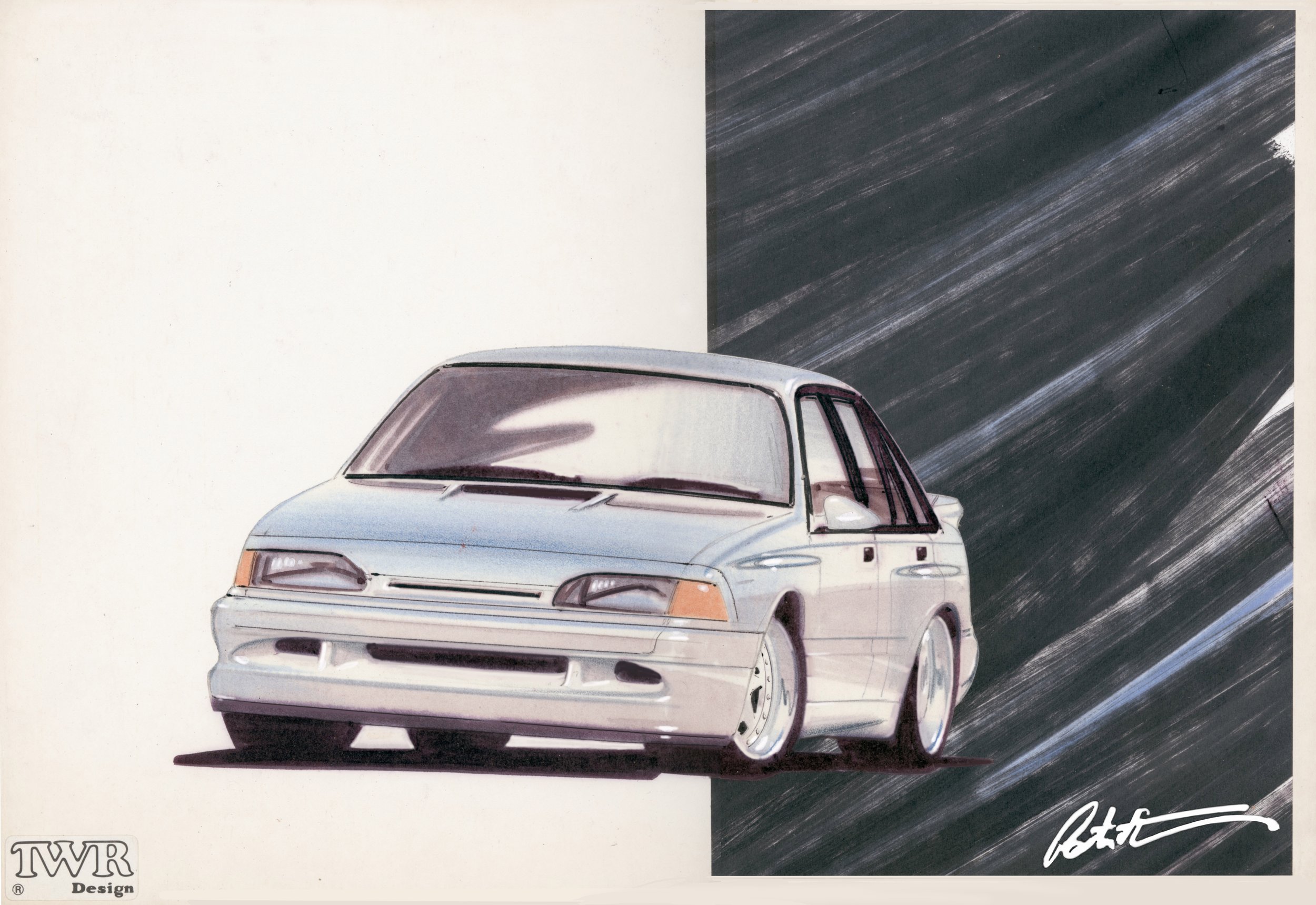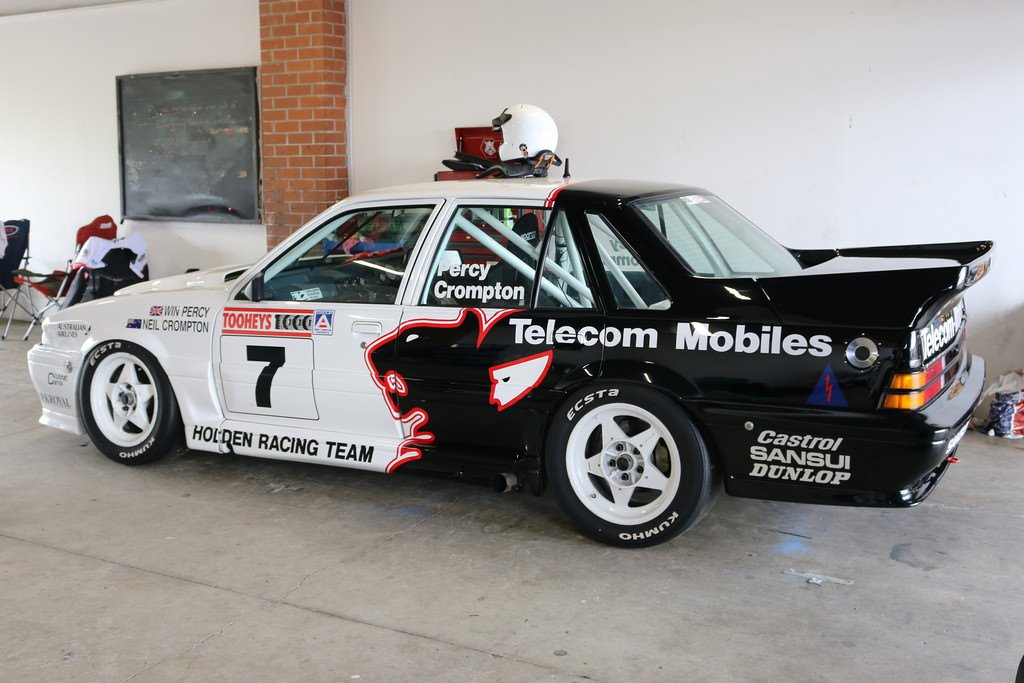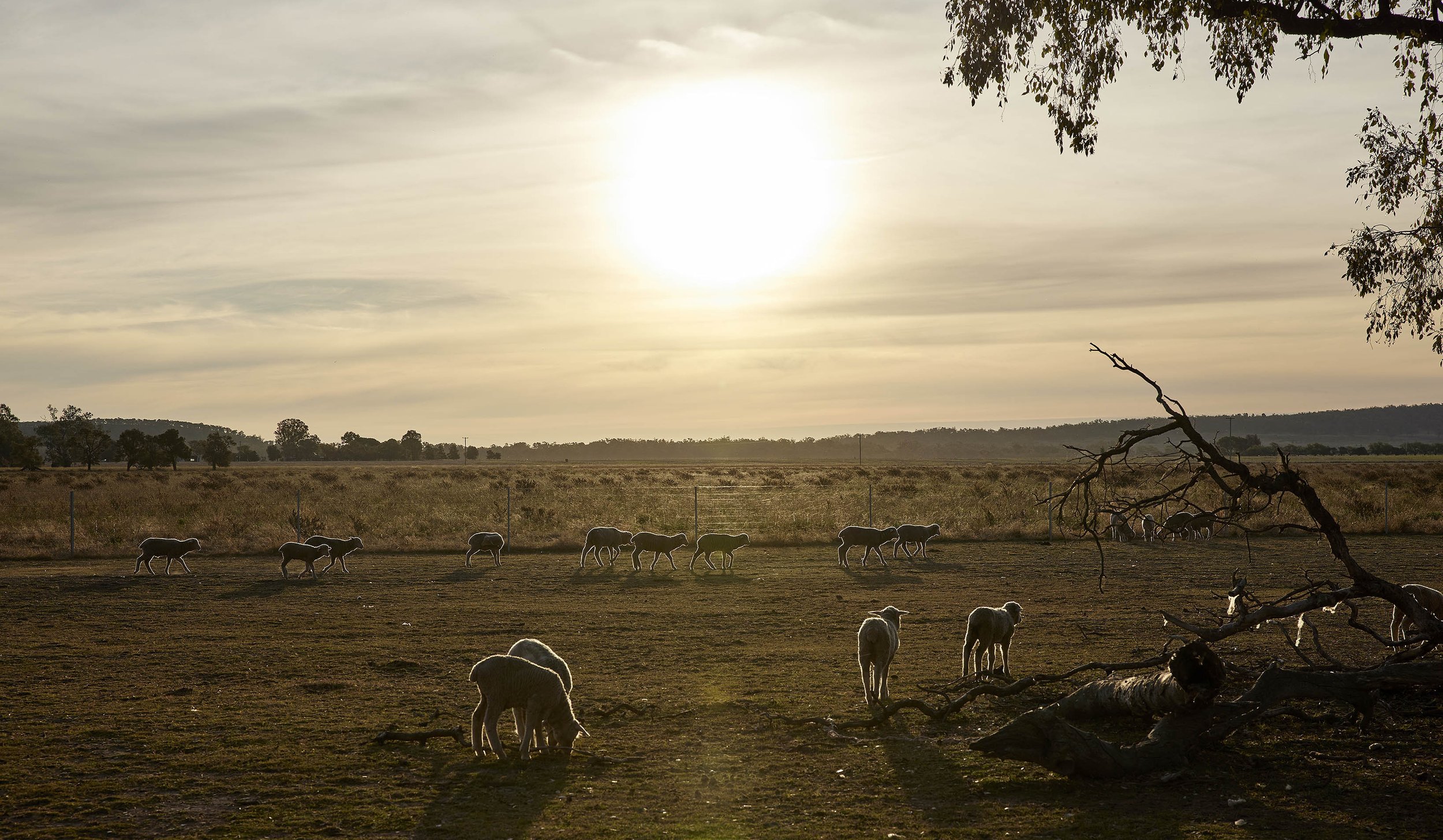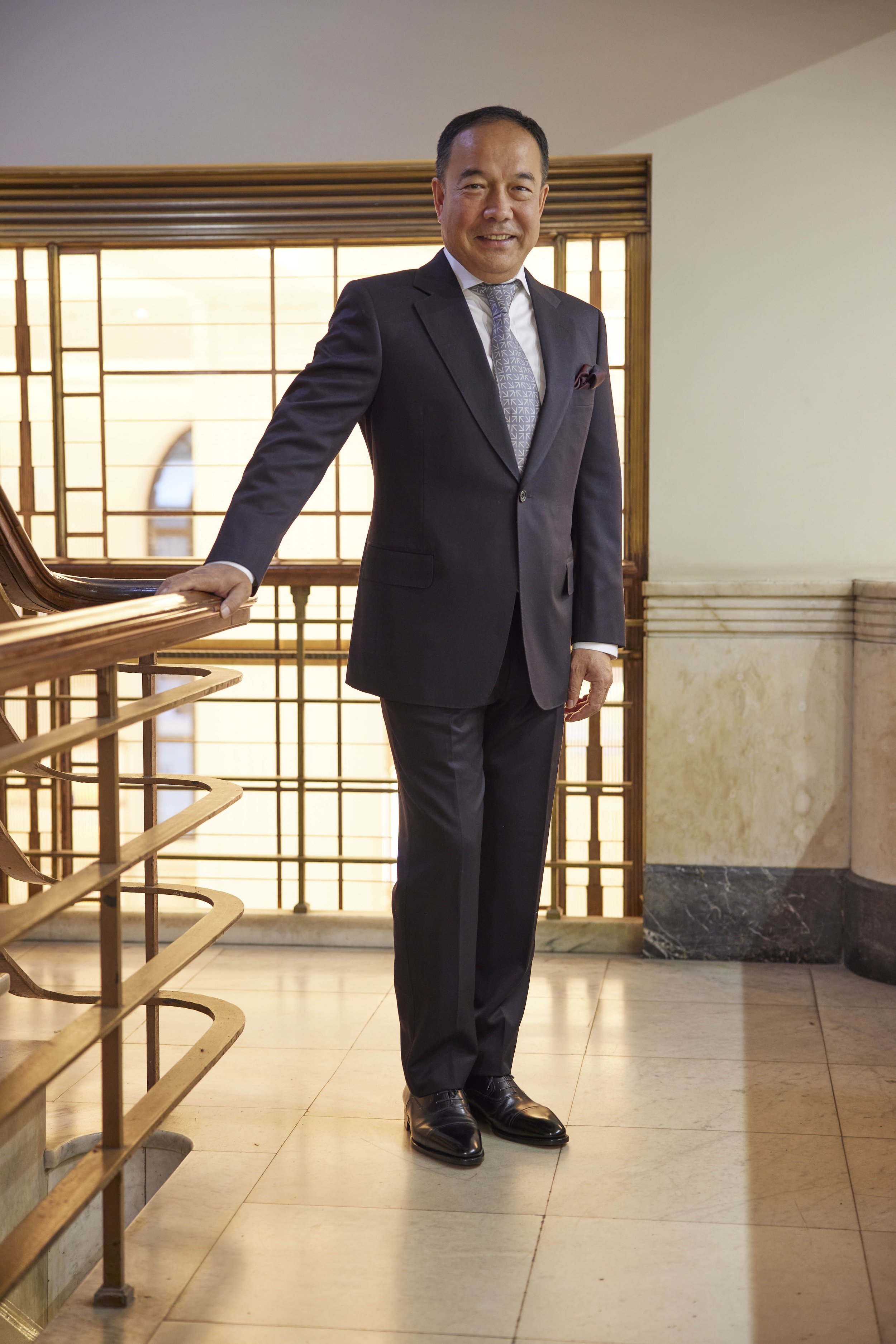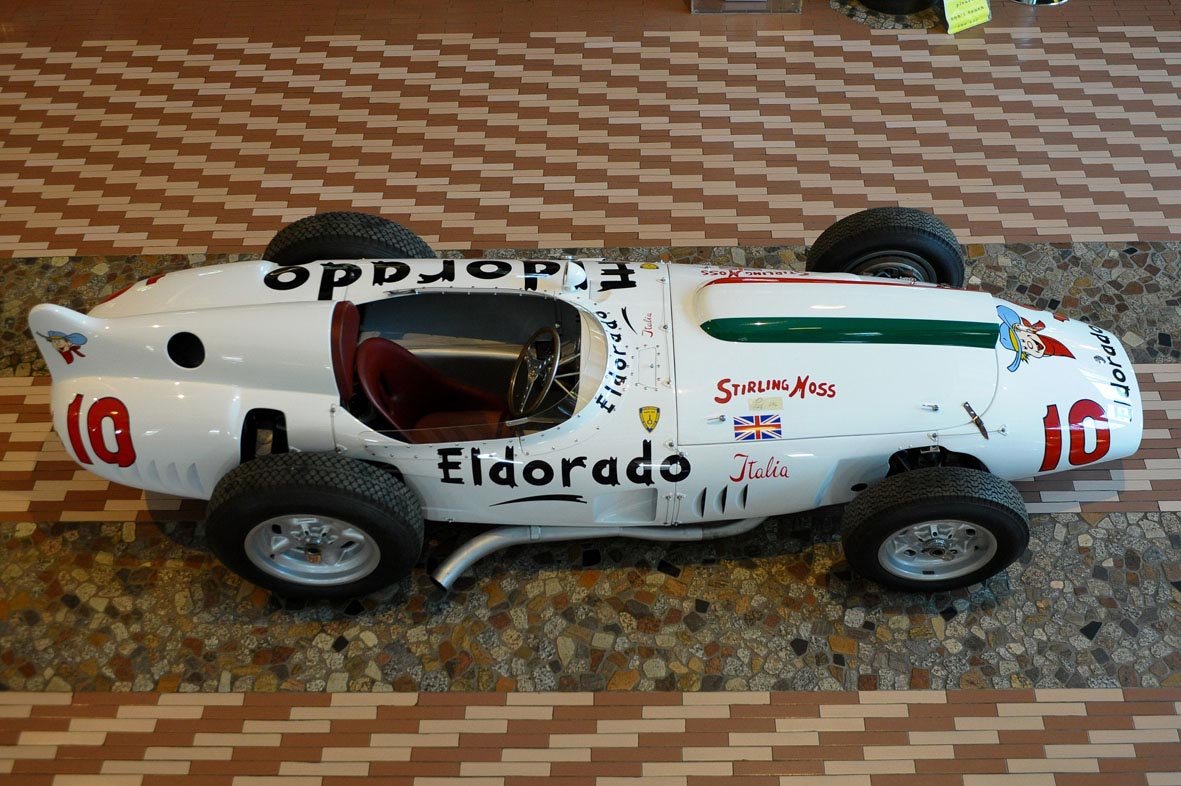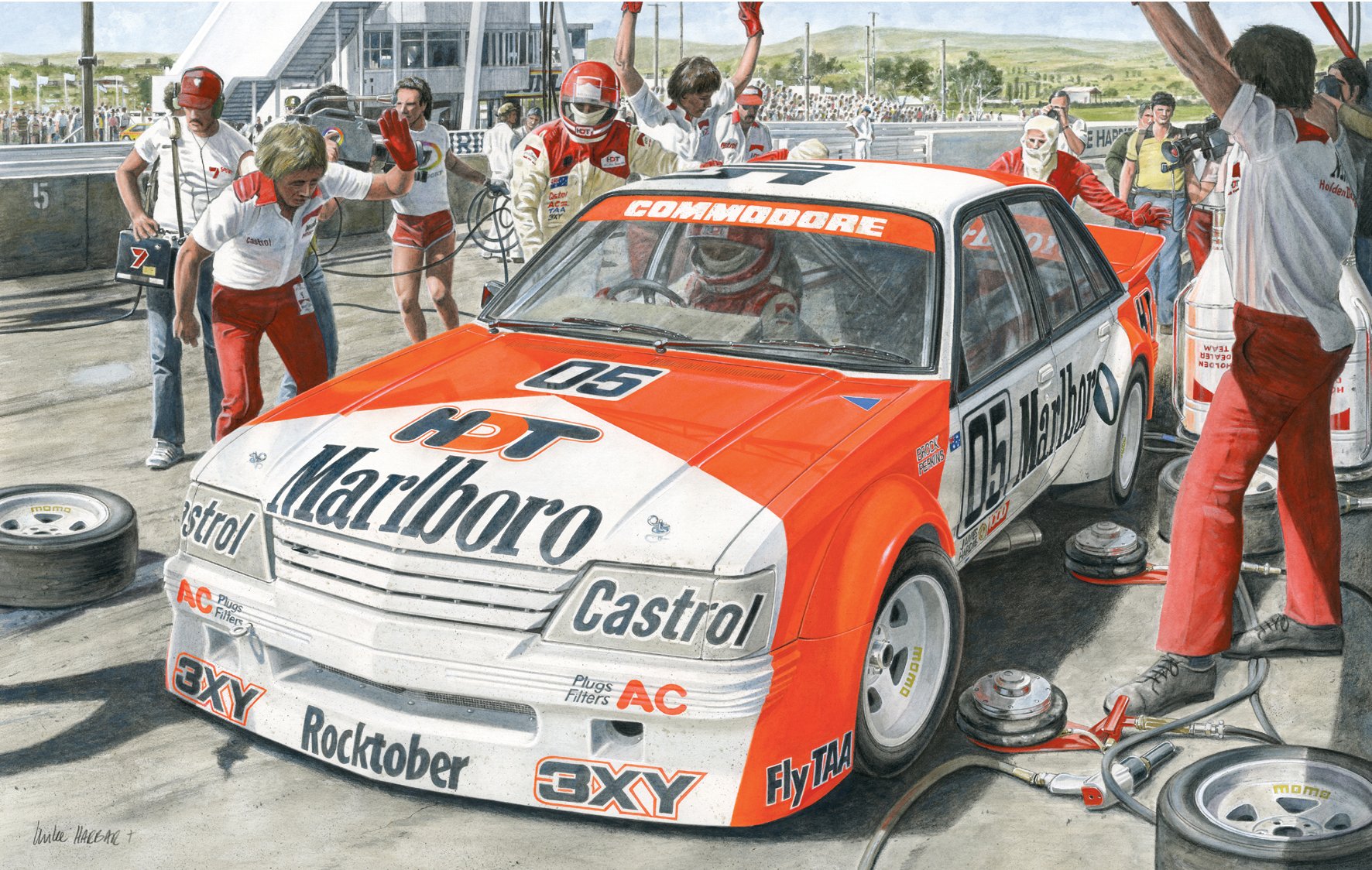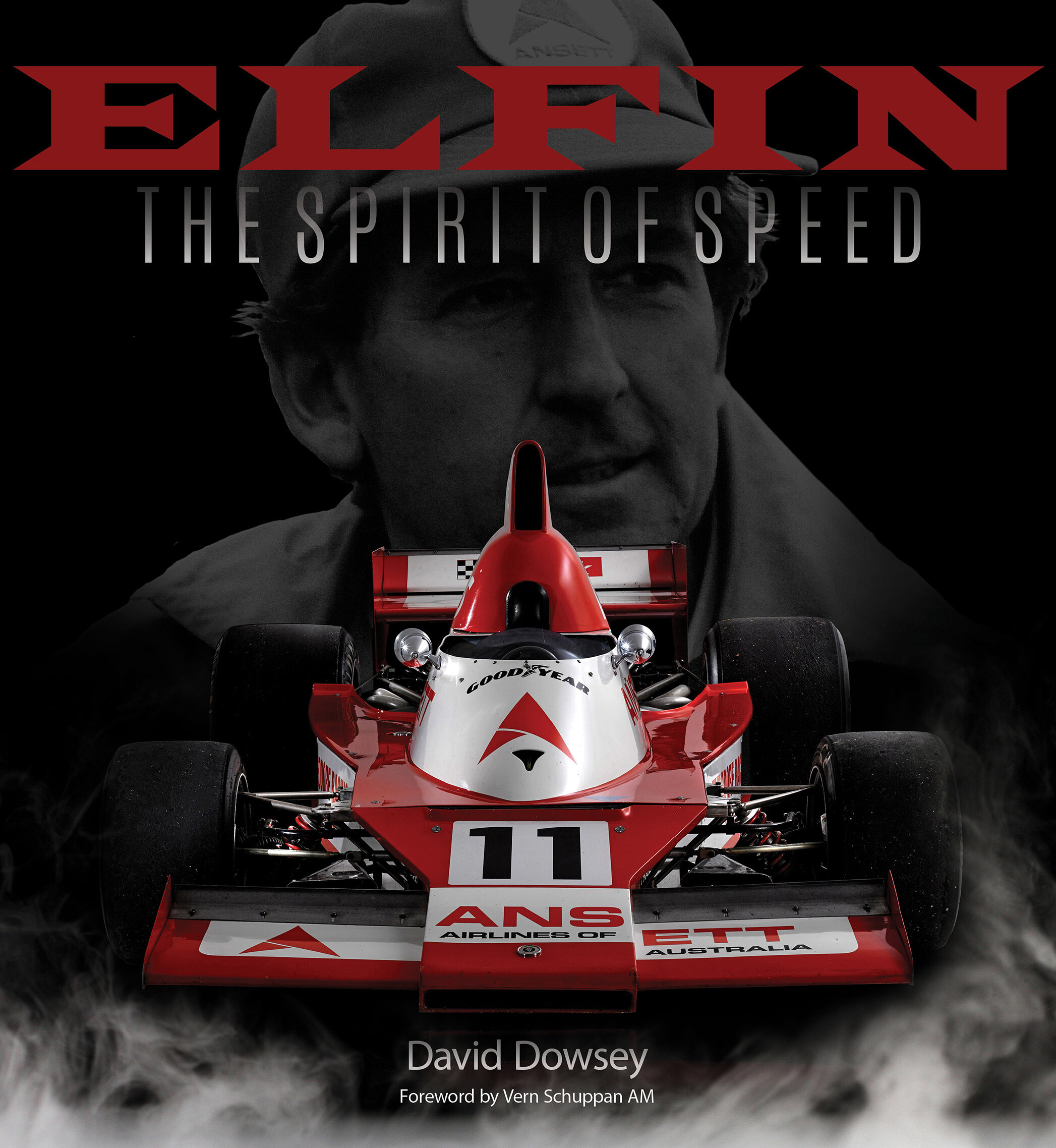Tom Walkinshaw recalled Holden “wanted to have a Group A car and the shape of the car at the time; it would lift at the rear. So, the only way we could get around it in the wind tunnel; we had to keep lifting it at the boot and it got higher and higher and higher until we had this huge tray on the rear, and we had to figure out how on earth you could actually style that into the rest of the car.
“So, we took the rule book and made everything the maximum dimension we could, and the car ended up the way it ended up.”
HSV had a problem, though. The fiberglass kit weighed 65kg.
“If it had any more fiberglass on it, it would have fallen over,” said Tom Walkinshaw.
The body kits proved a major challenge on the HSV factory line in Victoria, as well.
Holden provided the donor cars and HSV fitted Peter Stevens’ body kit. HSV representatives sourced local suppliers for the fiberglass parts and first approached Bolwell, experts in fiberglass production – think Ronald McDonald statues, playground equipment and classic Aussie cars – but the company knocked back the commission.
Eventually, three or four suppliers produced and delivered the unpainted fiberglass sections, but the panels became a nightmare for the fledgling company and the estimated unit cost skyrocketed.
Holden provided a base VL Commodore, which HSV staff used to finesse the body kit. The new expert fiberglass recruits, under the watchful eye of race-ace John Harvey, then took moulds for the individual pieces from the ‘formed-up’ car. They had a problem, though, which Harvey traced back to the source.
Minor build variations in the Holden donor vehicles – the last cars built at GM-H’s Dandenong factory – proved troublesome when fitting the skirts, so HSV had to fit them in two parts.
Holden Special Vehicles factory staff also discovered that, while a panel might fit on one car, it would not fit on another and, with 750 vehicles passing through the Clayton facility, this became a colossal quality control headache.
Stevens designed the fiberglass body kit to ‘manage’ airflow around, through and under the car. HSV claimed tests in the Motor Industry Research Association (MIRA) wind tunnel in Warwickshire, UK, revealed the body kit reduced drag by 25 per cent over the previous Holden Dealer Team VK Group A car, with gains in high-speed downforce. In fact, Stevens’ design achieved a drag coefficient of 0.314, better than the much-hyped Jaguar XJ 220 (0.337).
Launched in 1988, the Group A’s body kit comprised 26 separate fiberglass pieces. Transforming the Holden base car with the kit, including tooling, painting and fitting, and rectification work, cost $6847 per unit. Holden priced the Walkinshaw at $45,500 (without options and before on-road costs), $13,500 more than a Calais Turbo.
Holden had to build 500 units to score FISA homologation. At some point, HSV executives and their appointed dealers got a little too optimistic and commissioned a further 250 cars. The first 500 cars sold quickly, but many of the remaining 250 overstayed their welcome in dealerships.
Resting on five-spoke 16-inch alloy wheels and 205/55 VR16 Bridgestone tyres, the TWR Holden looked tough as nails, but the styling did not convince everyone.
It’s said Holden executives didn’t much like the Group A car’s design, to which Walkinshaw retorted: “You want to win motor races, don’t you?” The Red Lion’s white collar brigade said of course they did, and the most distinctive HSV ever made became well-remembered and collectable.
Compare the Walkinshaw to the pinstriped SV88 from the same era. That car didn’t stand out from the crowd, and few recall it. There are other forgotten cars; vehicles that have followers, but which aren’t heroes of HSV’s back catalogue.
Why? Design, that’s why.
And Peter Stevens designed the hell out of the TWR Holden.




